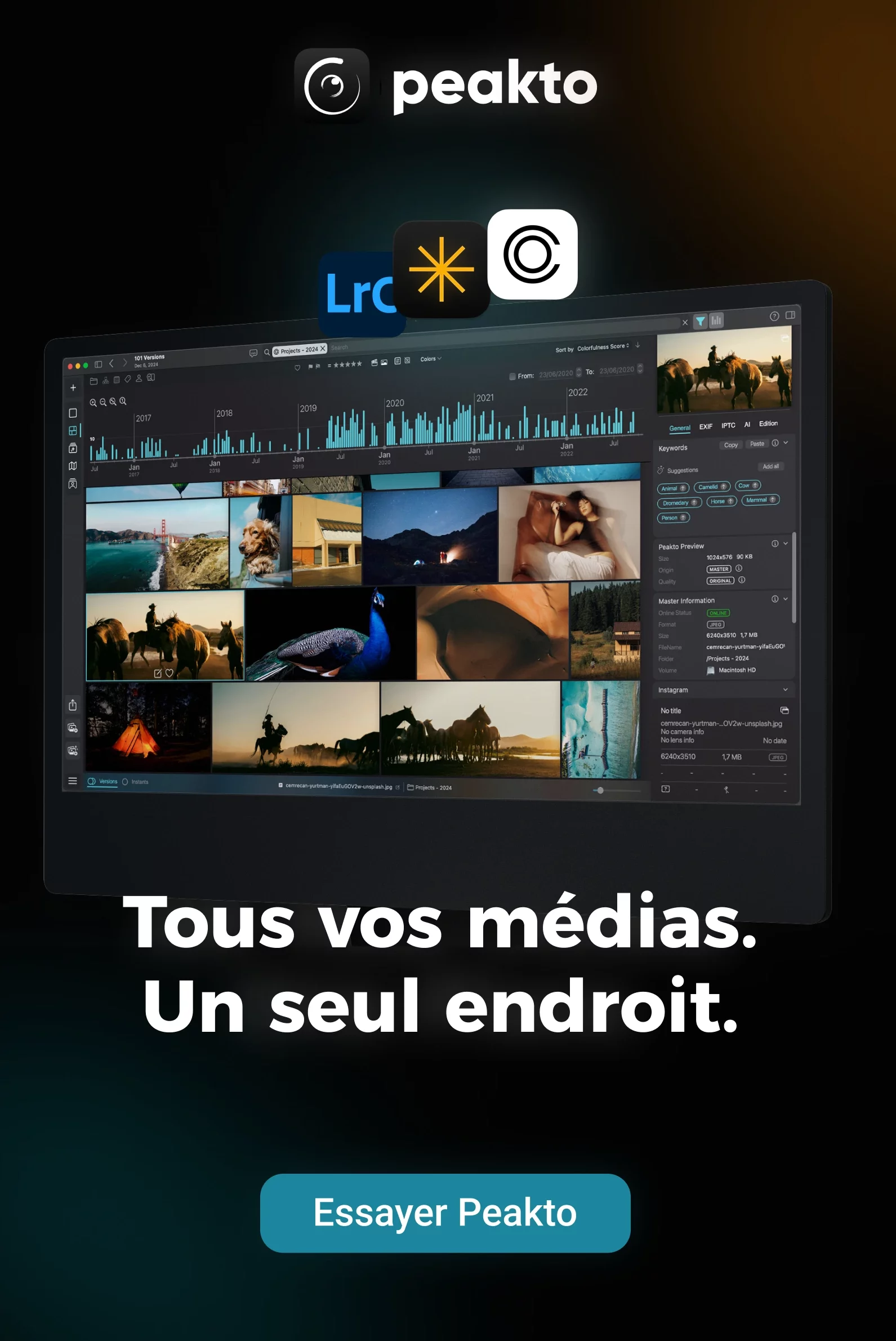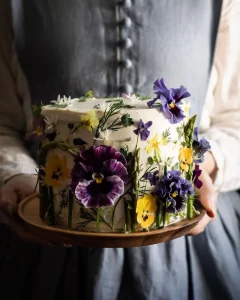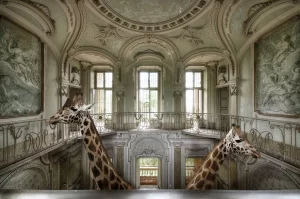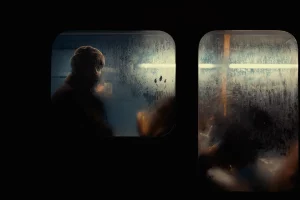Masaki Okumura a appris,dans un premier temps, à exprimer sa créativité par le biais du design de produit. Des voyages et un bouleversement de carrière lui font sauter le pas: il devient photographe professionnel.
Masaki est un photographe aux clichés libres tout en étant empreints d’une attention à l’objet, au détail, au faire et savoir-faire.
Par ses photos et sa maîtrise de la lumière, Masaki nous invite à partager l’intimité des gestes d’artisans ou de simples instants de vie.
Son talent a séduit de grandes marques comme Issey Miyake, Withings, Montblanc ou encore Dolce Gabana…, et son récit nous apprend comment une carrière peut totalement être bouleversée par l’écoute de nos passions.
N’avez vous jamais songé à tout arrêter pour continuer dans une autre voie ?
Inspirez-vous de cet interview riche en conseils et persévérez dans votre passion…, peut-être que celle-ci fera partie de votre personne demain.
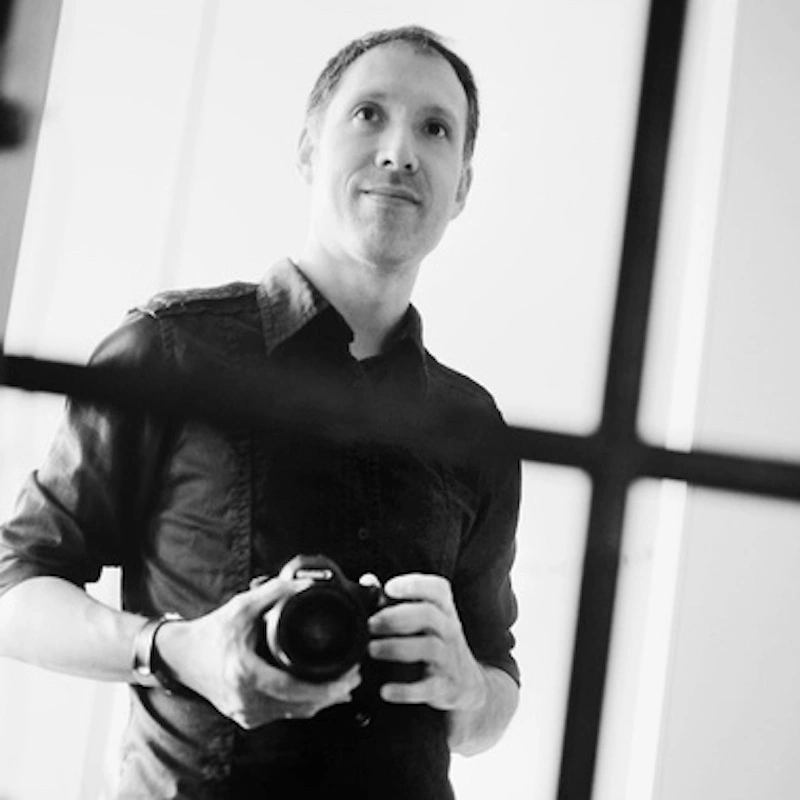
Avant de devenir photographe professionnel, vous étiez designer dans la conception de produits. Qu’est-ce qui vous a poussé à basculer complètement du côté de la photo ?
La vie n’étant pas linéaire, la bascule a pris quelques années à se faire:
En tant que designer, j’étais effectivement en charge de dessiner et de concevoir des produits dans une grande société de téléphonie mobile française.
Ce fut une expérience marquante qui m’a donné la possibilité de travailler avec des équipes aux compétences très diverses et exprimer ma créativité dans un contexte où le challenge était de transformer les contraintes technologiques fortes en valeur et solutions esthétiques et fonctionnelles par le dessin.
Mes voyages professionnels dans le cadre de mon métier de designer, en Asie et en Amérique latine notamment, m’ont ouvert à la photographie de voyage et m’ont (re)connecté à mes valeurs de liberté et d’exploration.
J’ai découvert une autre manière d’exprimer ma créativité de manière plus libre tout en me connectant aux ambiances, aux lieux et aux personnes que je rencontrais sur mon chemin.
« Suivre sa voie et ses aspirations est primordial surtout lorsqu’on aborde des métiers passion comme la photographie. »

Vers 2006, l’entreprise dans laquelle je travaillais depuis 8 ans se restructurait, et cédait son activité de téléphonie mobile à une multinationale chinoise. C’était le début de la crise des télécom et des sub-primes…
Les perspectives du département design n’étaient plus assurées, nous poussant à nous réinventer… Ce fut une période difficile de transition et de flottement, car les projets n’étaient plus aussi nombreux.
C’est à cette époque précisément, que j’ai commencé à me questionner sur la direction à donner à ma carrière, et la photographie revenait sans cesse dans ma réflexion.
J’ai donc proposé à mon responsable de photographier les derniers prototypes et tous les objets intéressants que nous avions dessiné, pour préparer nos books de sortie !
En parallèle, j’ai également commencé à faire de la direction artistique auprès de photographes de studio qui réalisaient les photos commerciales des produits que nous dessinions.
Ceci à été pour moi l’occasion de me faire une meilleure idée du métier, et de discuter avec eux de leur passion, la manière dont ils l’abordaient, leurs techniques…
Au bout du compte, c’est la rencontre avec la photographe Patricia De Gorostarzu et les échanges que j’ai pu nourrir avec elle qui m’ont donné la dernière impulsion…
J’ai donc pris la décision difficile de quitter l’entreprise, et un métier très bien rémunéré pour suivre ma passion de la photographie et exprimer ma créativité d’une autre façon, plus libre et alignée à mes valeurs !
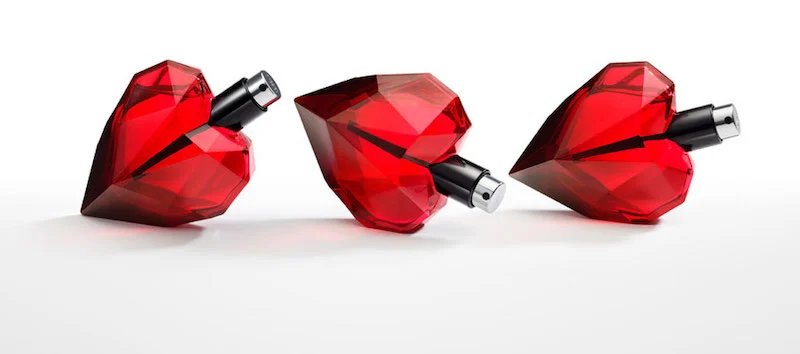
Selon vous, comment votre métier de designer a-t-il influencé votre travail de photographe ?

Vous travaillez pour de grands groupes industriels et des agences de design sur des objets très modernes. Pourquoi, dans une série de reportages, avez-vous tourné votre objectif vers des artisans dont le travail est très éloigné des lignes lisses et épurées d’un smartphone ou d’une montre ?
Je trouve aussi que les contrastes sont intéressants car ils enrichissent l’expérience. Sur un plan visuel, cela me permet d’exprimer une facette plus émotionnelle et intuitive de ma personnalité directement liée à ma double culture latine et japonaise.
Ce qui m’attire chez eux, c’est l’aspect authentique et essentiel de leur travail, leur engagement dans leur Art, leur savoir-faire unique, les matières, et des créations sur-mesure… finalement très proche de ma démarche photographique… Ce sont des professions avec lesquelles je me sens en connexion et que j’ai également envie de valoriser.
» Ma vision de la photographie n’est pas cloisonnée et ma motivation a toujours été d’apporter des valeurs positives par le beau. »
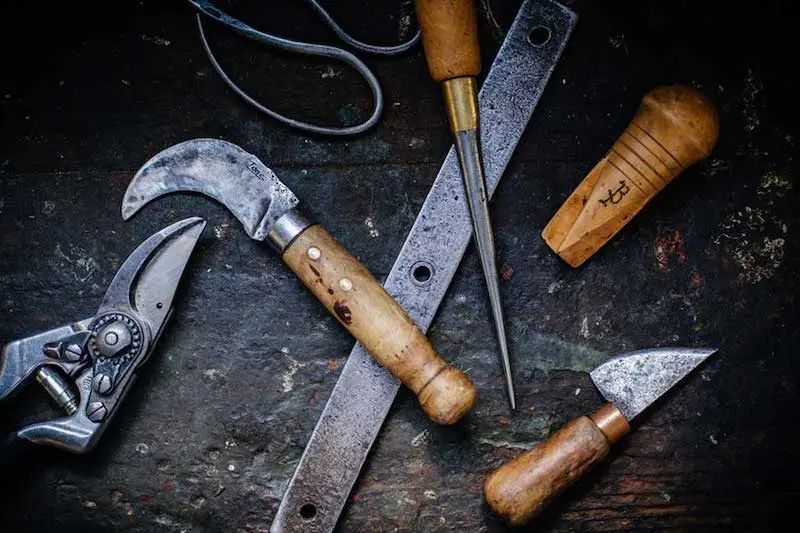
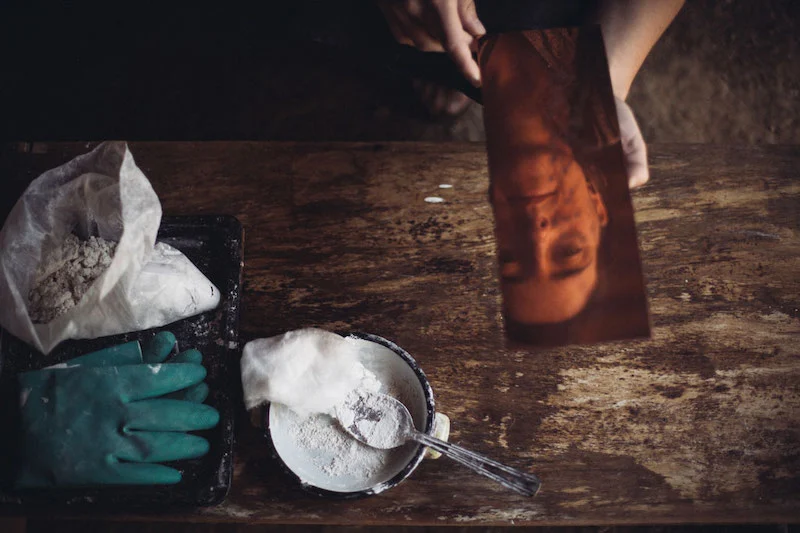
Vous photographiez une artiste graveur, un fabricant de panier en osier, un ferronnier d’art. Pourquoi les avoir choisis en particulier ? Qu’est-ce qui vous a attiré chez eux ?
Vous aimez l'interview de Masaki ?
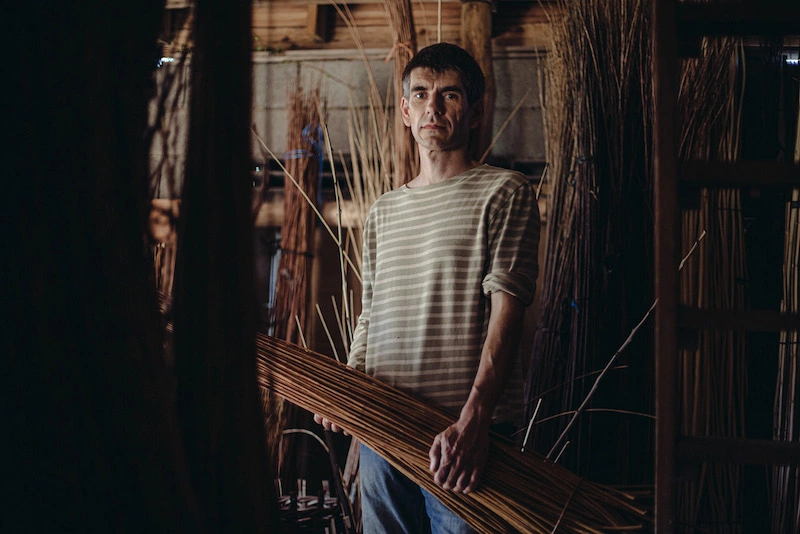
Cette série sur 4 artisans offre de véritables récits où toutes les étapes de la création se déroulent sous nos yeux. Comment avez-vous construit cette narration ? Est-ce qu’elle suppose un travail préparatoire ?
Ne pouvant pas faire de repérage auprès de chaque artisan pour des questions de disponibilités et de distances, je me suis basé sur les explications d’Agnès qui connaissait déjà les lieux.
Ceci m’a permis d’imaginer une première trame narrative basée sur la chronologie qui permettrait de bien comprendre chaque processus de création, mais c’est finalement sur place que j’ai pris la mesure du potentiel…
Nous avons ensuite accompagné chaque artisan pendant 2 jours en immersion totale pour apprendre à mieux les connaître, comprendre chaque geste et couvrir l’intégralité de leur processus de création.
« Mon intention était à la fois de plonger le spectateur au coeur de leur atelier en leur faisant vivre une expérience visuelle et sensorielle… »
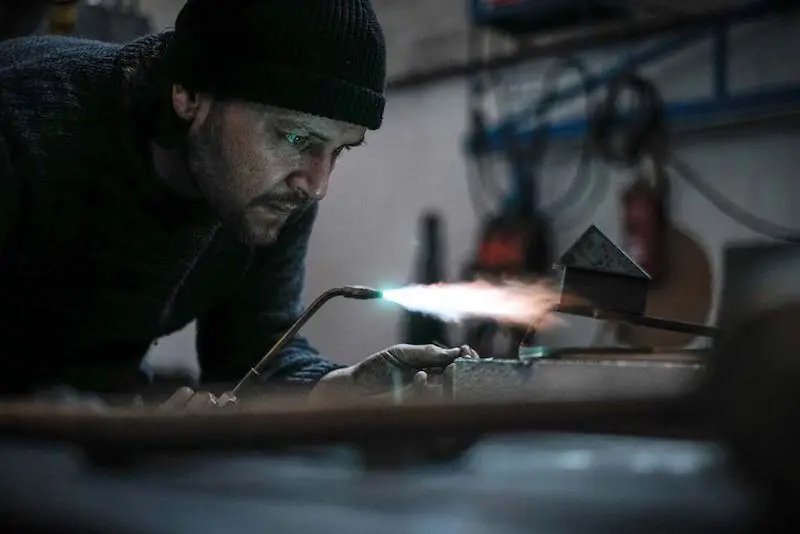
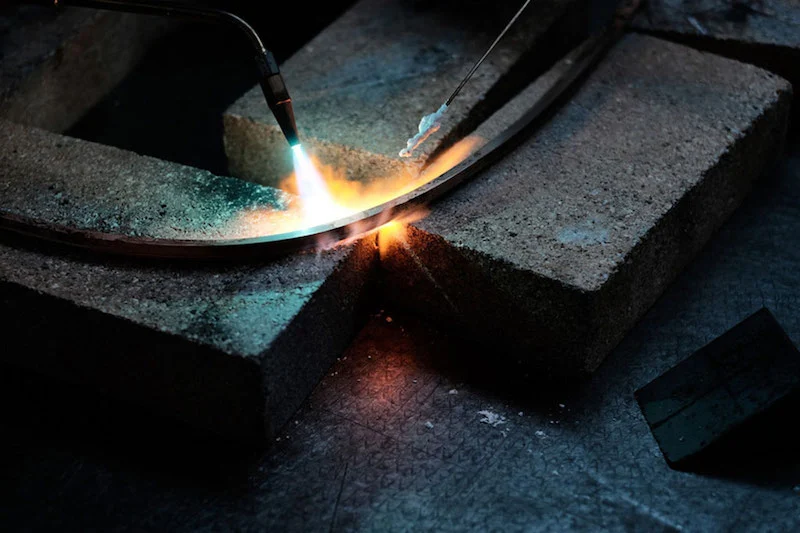
Quels sont les ingrédients d’une bonne “histoire” photographique ?
De mon pont de vue, il me semble important qu’il y ait une cohérence d’ensemble tant dans le rythme du récit que dans sa forme. Dans ce sens, un editing soigné des photos, leur sélection et leur arrangement les unes avec les autres est également très important.
- Le contexte: D’une manière générale il est important de placer l’histoire dans un contexte pour situer le sujet et l’action et retranscrire l’atmosphère des lieux en lien avec le sujet (Plans larges ou de détail des lieux qui viennent enrichir l’ambiance, l’atmosphère et rendre l’histoire plus convaincante)
- Le sujet: Il peut alors se révéler peu a peu tout en suggérant ses intentions et sa personnalité par des gros plans, des détails, ce qui permet de nous identifier et créer un lien émotionnel avec lui. Bien sûr, le sujet peut prendre toutes les formes.
- L’événement: Ménager la narration et ne pas tout révéler dès le départ, mais suggérer. Les gros plans et les plans de coupe par exemple sont intéressants pour créer les transitions d’une scène à une autre, apporter du suspense ou renforcer une atmosphère…
- Le dénouement: La récompense, la révélation de fin qui permet de comprendre le but final de l’histoire. Celle-ci peut être également ouverte ou suggérée pour laisser courir l’imagination du spectateur…
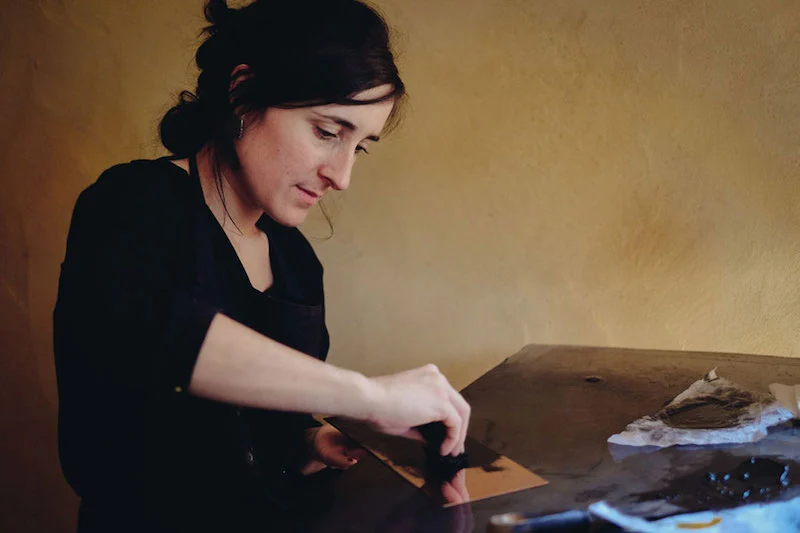
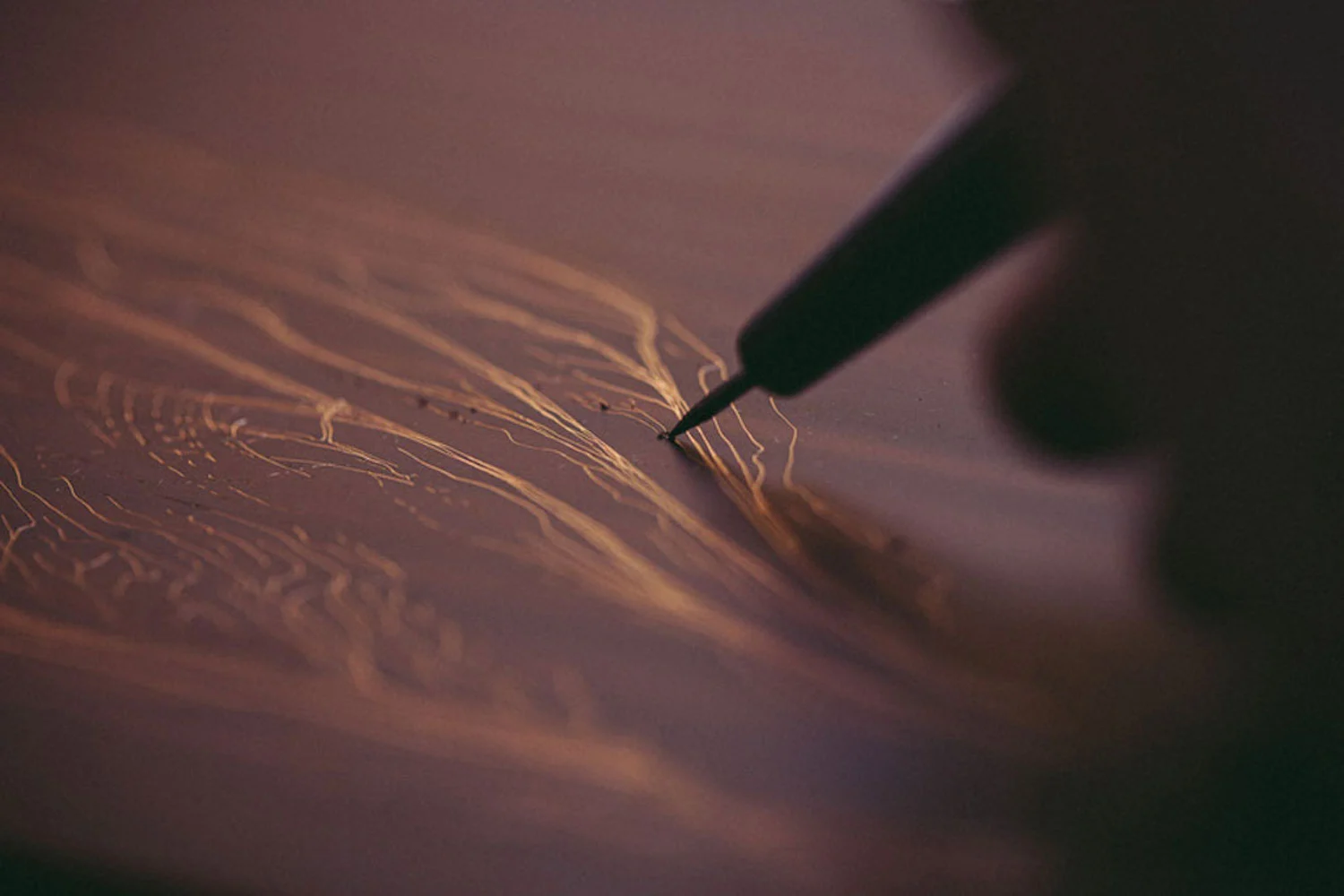
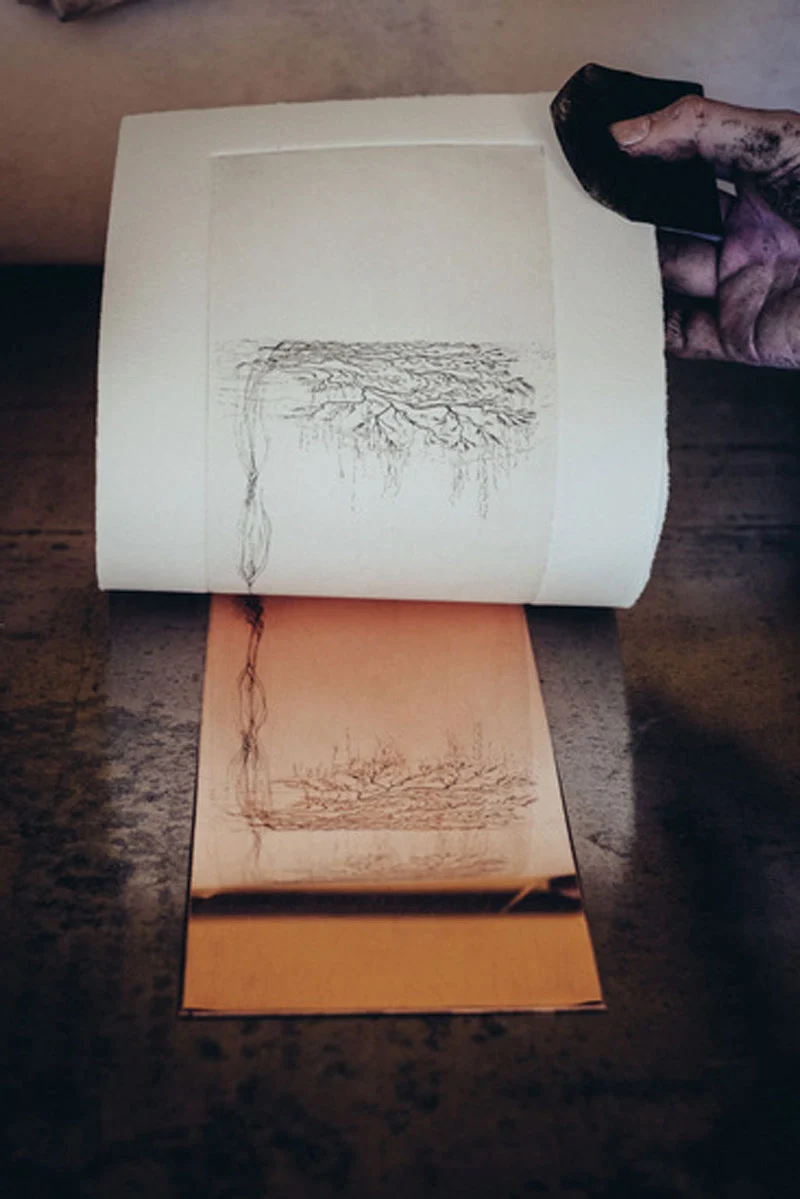
Les photos de ces séries peuvent-elles être prises séparément ou n’ont-elles de valeur que comprises dans un ensemble ?
Tout dépend de l’histoire et du message que l’on souhaite transmettre:
Parfois, certaines photos ont un pouvoir d’évocation assez puissant pour qu’elles se suffisent à elles-même.
Parfois, elles n’ont que plus d’intérêt associées dans un ensemble comme cela est le cas avec les séries sur les artisans où la chronologie est importante pour comprendre la logique de leur processus de création, leur savoir-faire et la valeur de leur travail.
Il est donc particulièrement important de choisir les bonnes suites d’images pour créer une vibration et provoquer une émotion ou de l’empathie chez le spectateur
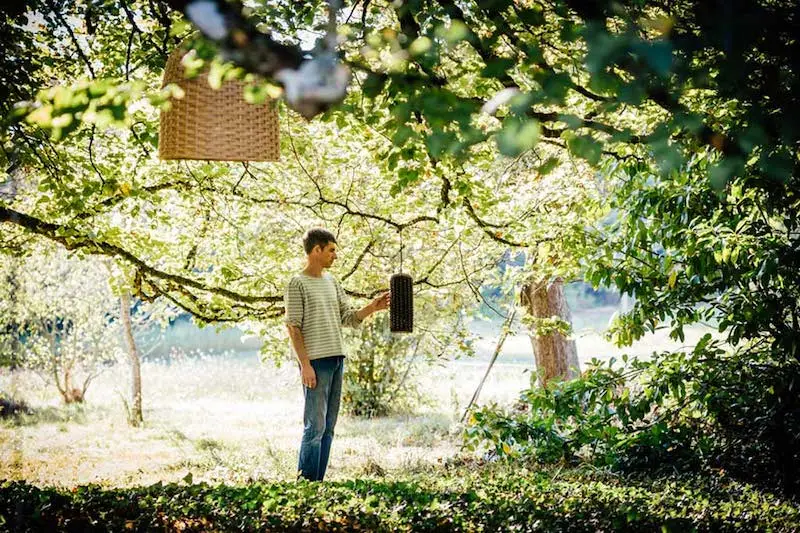
Votre travail photographique personnel est tourné vers l’Asie et les voyages. En quoi ces sujets vous inspirent-ils ? Qu’est-ce qu’ils vous permettent de capturer ?
Durant ma vie en Espagne et au Japon, j’ai été baigné dans des lumières et des atmosphères particulières… difficile de vous l’expliquer mais c’est une sensation que nous avons tous lorsque nous arrivons quelque part… On ressent cette lumière qui renvoie à quelque chose de plus intime et profond qui provoque en nous des émotions. Pour moi, ce fut de belles sensations, une idée de liberté et d’intensité que je recherche encore aujourd’hui dans mes voyages et particulièrement en Asie où je me sens en connexion.

Je ressens là bas beaucoup de contrastes, d’énergie, de curiosité et de respect de l’autre, une sensation que tout est possible du moment qu’on s’en donne les moyens si modeste soit-il, même si comme partout rien ne soit totalement idéal…
J’ai vu au Vietnam, au Cambodge ou en Chine des gens très modestes vivant dans des conditions si difficiles et pourtant tellement fiers et généreux…
C’est pour moi, une façon de voir le monde en alignant l’esprit et le coeur et de révéler la beauté là où on ne l’attend pas. C’est cette même motivation qui m’anime lorsque je compose mes scènes de rue ou des objets dans mon studio.
La texture, l’intensité et la qualité de la lumière et des ombres est primordiale car c’est l’interprétation de tous ces ingrédients qui me permet de provoquer de l’émotion et de révéler ou sublimer certaines scènes ou objets aussi simples soient-ils.
Dans mon cas, je pense plutôt « révéler » que « capturer » par ma photographie.
« La photographie est une belle passerelle pour aller à la rencontre de l’autre et assouvir ma soif d’aventure et de découverte. »
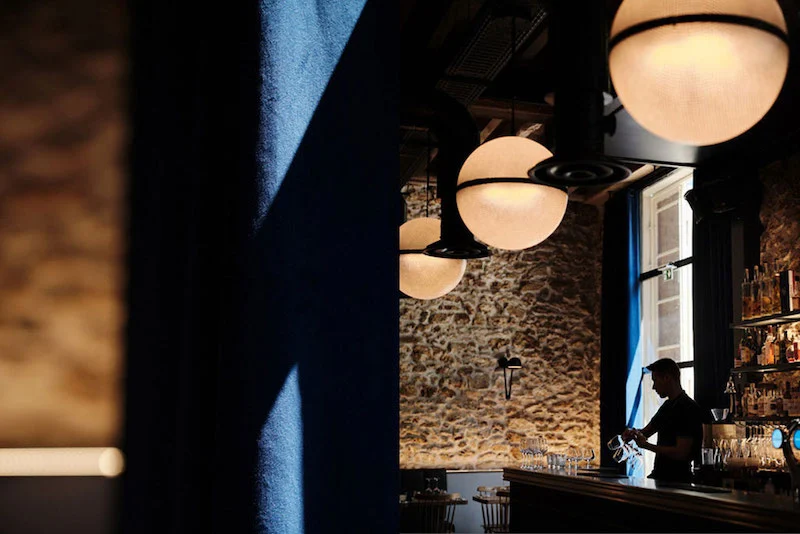
Vous travaillez beaucoup la lumière et la saisie d’instants fugaces dans votre travail personnel. Quels objectifs aimez-vous utiliser pour ces séries ?
Au début, j’appréciais les zooms que je trouvais très pratiques en voyage.
J’utilisais principalement le Canon EF 24-105mm L f4 IS pour l’amplitude focale et la stabilisation optique très utile en basse lumière sans trépied. (Séries Shanghai nightwalk, Hong Kong, et Maroc)
J’utilisais aussi un EF 17-40mm L f4 que je réservais plutôt aux photos de paysages ou d’architecture.(Série Hong Kong architectures)
Les choses ont changé lorsque j’ai envisagé la photographie de manière plus sérieuse et en étudiant la photographie de certains auteurs qui m’inspiraient à l’époque.
J’étais intrigué par la qualité de leurs images tant sur le plan narratif, esthétique que technique et je me suis rendu compte qu’ils utilisaient la plupart du temps des focales fixes qui finalement correspondaient à leur personnalité et leur vision du monde, signant au passage leur style photographique.
Cette interview vous inspire ?
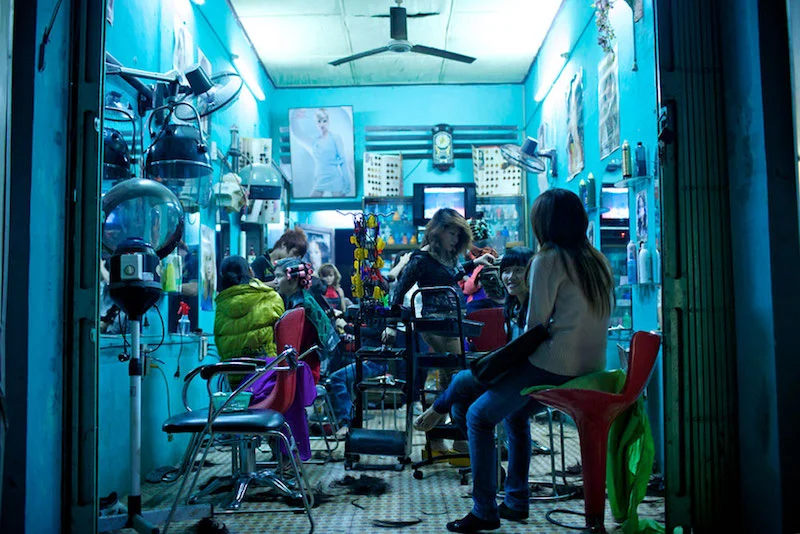
C’est au cours d’un voyage au Vietnam et au Cambodge que j’ai eu la révélation en me fixant comme contrainte de n’utiliser qu’un 35mm f1,4 L et mon vieux 50mm f1,4 avec mon EOS 5D.
Après une période d’adaptation et avoir compris les possibilités offertes par chacune de ces focales en termes de rendu, j’ai su naturellement à quelle distance me placer par rapport à mon sujet et avec quelle intention esthétique.
Leur compacité m’a permis d’approcher de parfaits inconnus sans les effrayer, et m’a offert de beaux moments de partage. (Ex. Série Vietnam)
Grâce à leur grandes ouvertures j’ai pu aussi affirmer mon style et une vision plus personnelle dans le rendu de mes images.
J’aime la capacité des focales fixes de me faire sortir de ma zone de confort en stimulant ma créativité.
La légèreté est libératrice car elle permet de se sentir plus adaptable, créatif et mobile…« Less is more » !
Aujourd’hui, j’utilise du matériel Fujifilm, et avec des focales fixes lumineuses allant du 24mm au 85 mm en équivalent Full Frame, pour les mêmes raisons de qualité, de rendu et de style photographique mais ma « desert Island Lens » reste le Fujinon XF 35mm 1,4 R (50mm en équivalent 24×36) pour sa qualité d’image et de rendu… (Ex. Série sur mon compte Instagram Fujifilm XT1 + XT2 – XF 35mm f1,4 R)
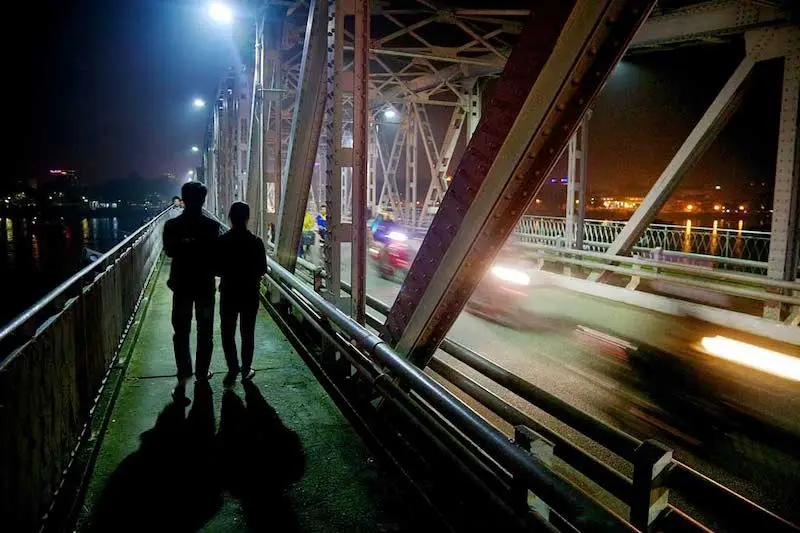
À l'inverse, quel est le matériel que vous utilisez en studio pour photographier les objets design ? Par exemple, pour mettre en lumière une montre, avez-vous une technique particulière ?
En studio, et pour ce genre d’images, j’utilise un appareil Fujifilm GFX 100S qui répond à mes exigences de qualité et de flexibilité de mes clients.
En général, j’utilise le GF 80mm f1,7 RW, le GF 120mm f4 Macro OIS RW ou même un Canon EF 90mm f2,8 TSE (A bascule et à décentrement) avec un adaptateur de la marque Fringer. Pour des plans plus larges, le GF 63mm f2,8 RW ou un GF 30mm f3,5 RW.
Concernant l’éclairage et la technique, je travaille avec des flashs de studio Elinchrom et des diffuseurs (scrims) maison montés sur des stands qui me donnent toute la souplesse pour modeler ma lumière en fonction du rendu que je recherche.
Ces diffuseurs sont très précieux pour photographier des objets très brillants car ils permettent de diffuser la lumière en douceur pour donner une belle gradation sur le verre ou le métal d’une montre par exemple. Selon leur placement et la distance de la source lumineuse, il est possible de travailler sa lumière très précisément.
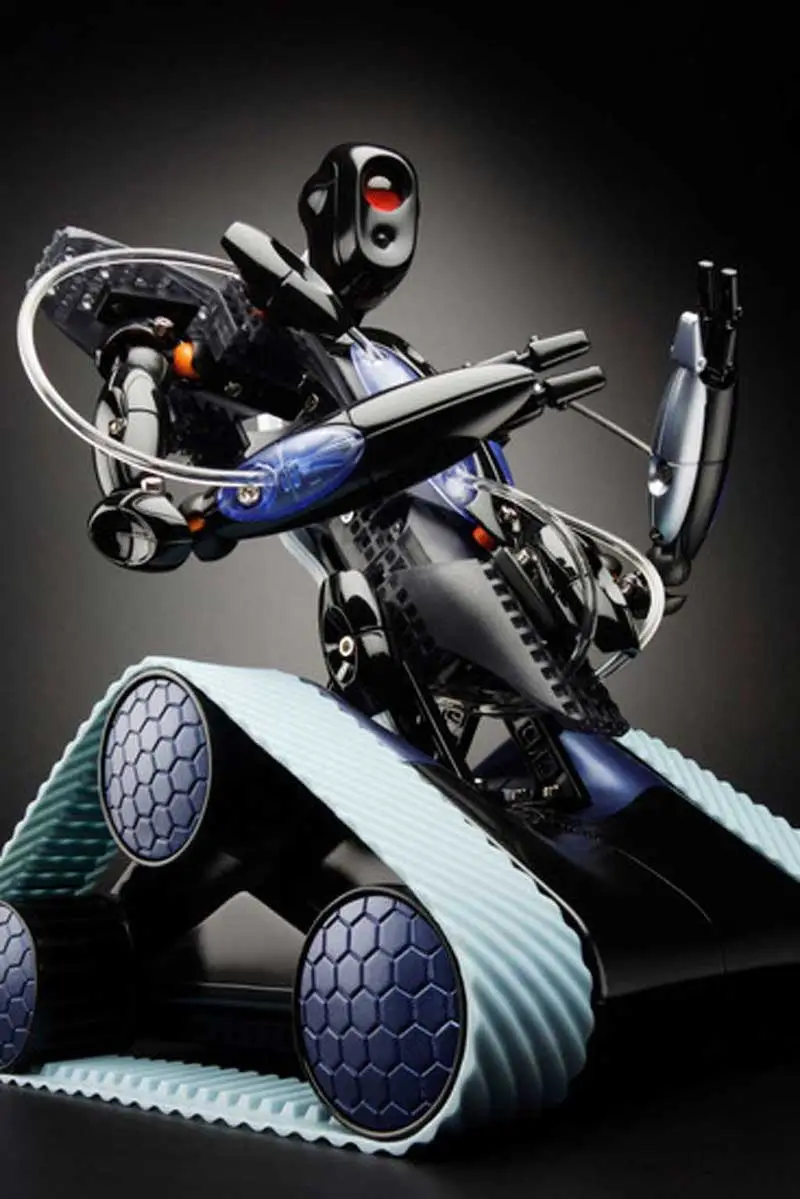
Il m’arrive aussi d’utiliser la lumière directe des flashs en la modulant simplement avec des réflecteurs, un snoot ou un ban-door pour un rendu très contrasté et graphique.
J’aime aussi mixer la lumière naturelle, le flash en High Speed Sync et l’utilisation de panneaux de diffusion (Ex. Photos lifestyle iPhone, vélo,…) Dans un cas, le flash vient juste appuyer la lumière naturelle ambiante (Ex. Photos studio iPhone sur dalles de marbre blanc).
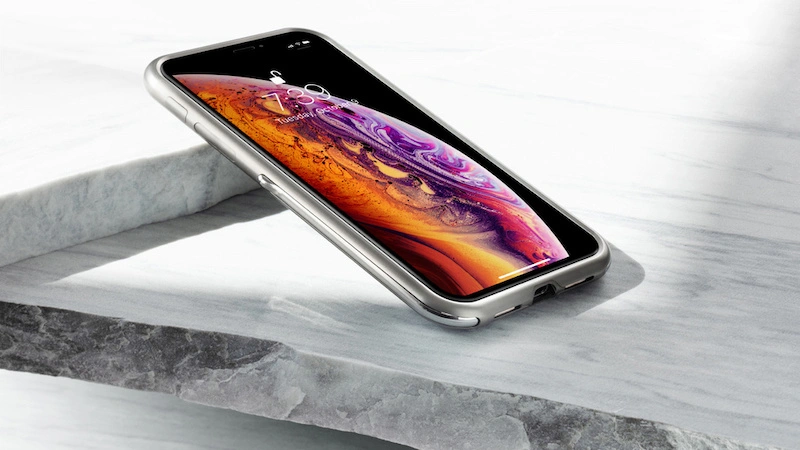
Dans un autre cas, je sous expose volontairement mon exposition et je règle l’intensité du flash pour éclairer correctement mon sujet, ce qui donne un rendu bien plus dramatique… (Ex. Photos lifestyle iPhone dans la Porsche et dans la boue).
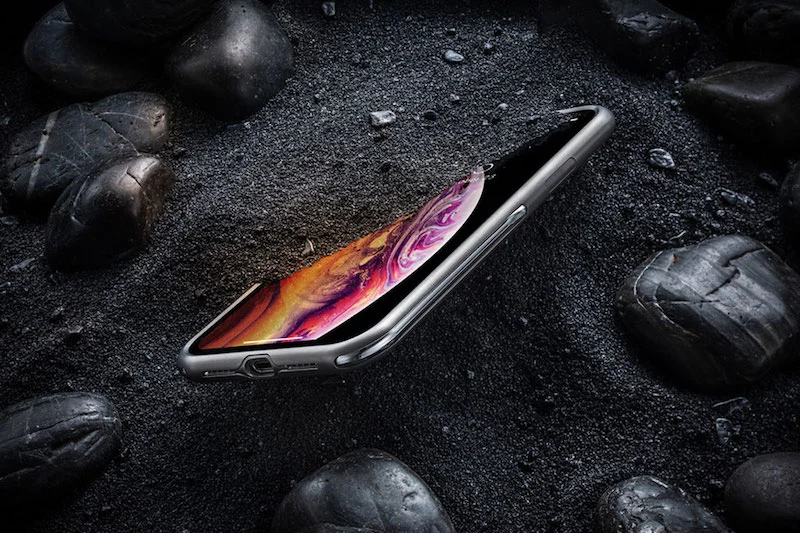
Évidemment rien de tout cela n’est linéaire et il m’arrive de mixer toutes ces techniques et différents types de sources lumineuses pour arriver à mes fins, y compris un écran d’iPad par exemple !
Lorsque l’objet est très technique comme une montre, il est parfois nécessaire de le shooter avec différentes expositions ou éclairages et faire un travail de compositing sur Photoshop pour créer une image cohérente, en gardant l’idée que le rendu final soit naturel.
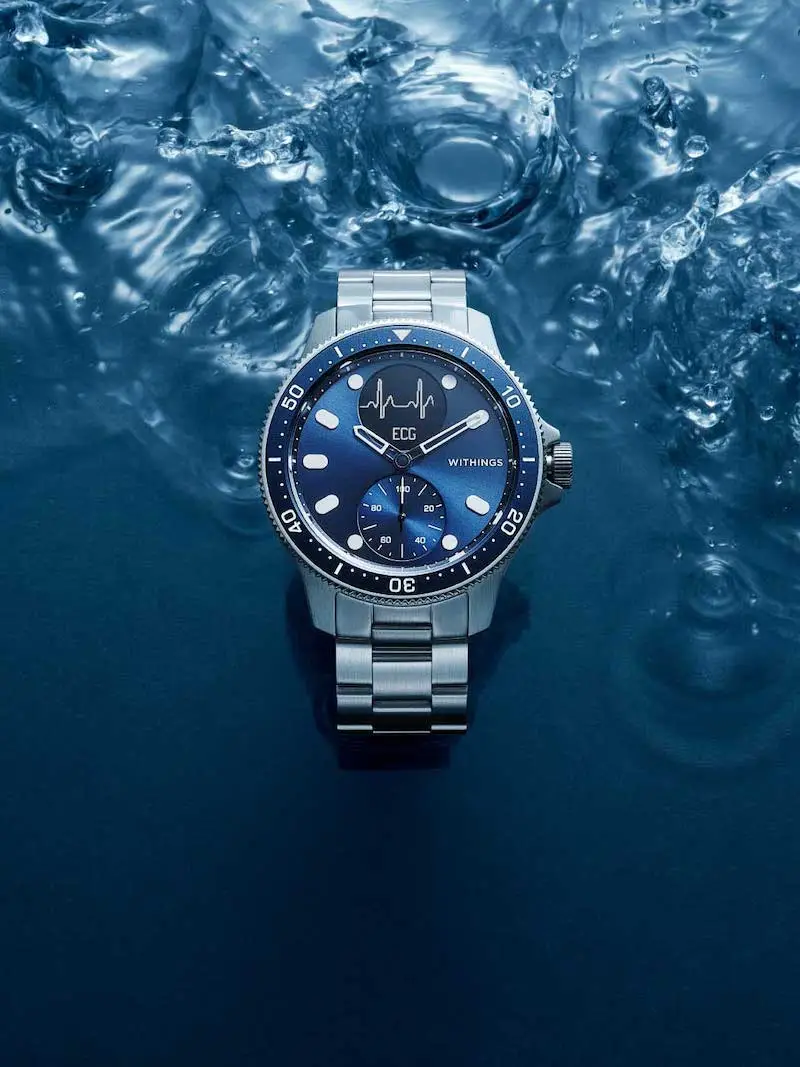
Est-ce que l’on aborde un travail de commande de manière très différente d’un travail personnel ?
Oui, clairement:
Pour mes photos personnelles, j’ai une approche beaucoup plus libre, expérimentale et instinctive en me basant sur mes sens et en laissant libre cours à l’imprévu.
Je n’interviens que très peu sur les éléments pour garder un maximum d’authenticité dans la scène, et je préfères être surpris en m’adaptant aux situations et utiliser la lumière disponible.
Avec un travail de commande les enjeux sont plus importants, car le client à des besoins et des exigences spécifiques avec des délais et un budget à respecter. S’il me laisse le plus souvent être force de proposition, il m’arrive de travailler avec un DA et d’autres prestataires. Un vrai travail d’équipe !
C’est donc une démarche plus concertée, réfléchie, précise, à la recherche de l’essentiel dans le message et la forme.
Néanmoins, je cherche toujours à aligner la réflexion et ma sensibilité pour révéler la beauté de l’objet et créer des images originales qui répondent à mes critères esthétiques et à ses attentes.
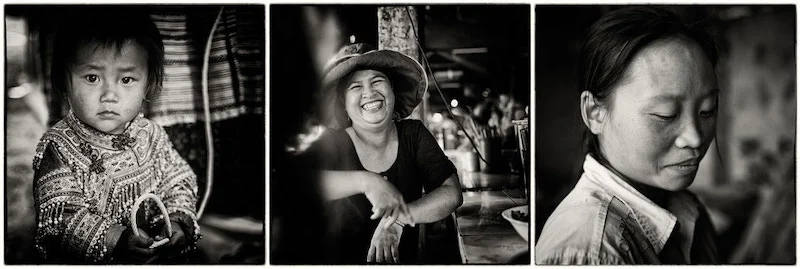
Quel type de retouche faites-vous sur vos photos ? Avec quels logiciels ?
J’ai longtemps utilisé Aperture puis Lightroom pour organiser mes vastes catalogues, classer les photos, faire l’editing, et effectuer les premiers réglages de colorimétrie, de contrastes, de netteté, etc…
Aujourd’hui, j’utilise Capture One pour le rendu des images et sa capacité à supporter les très gros fichiers de mon Fuji X100S. J’utilise aussi beaucoup Photoshop pour celles qui nécessitent des photomontages complexes comme c’est souvent le cas en studio. Dans ce cas, j’utilise beaucoup les masques de fusion pour doser certains rendus sur mes images.
Quelles sont vos sources d'inspiration pour votre travail photographique ? Des salons d’arts, un photographe en particulier, des magazines ..?
Les salons et les expositions, bien sûr, mais surtout les voyages et le travail d’autres photographes. Très jeune (et encore maintenant), j’adorais me plonger dans les magazines qui me faisaient voyager et rêver d’exotisme comme National Geographic.
Je trouvais les images très fortes et inspirantes, comme celles de Steve McCurry, Salgado, Alex Webb, ou David Alan Harvey,… dont j’admirais les contrastes, les couleurs et les compositions…Je suis assez contemplatif, et j’aime aussi observer les choses simples autour de moi et dans la nature, une lumière, une ombre portée, un petit détail qui semble insignifiant… suffisent parfois à m’inspirer !
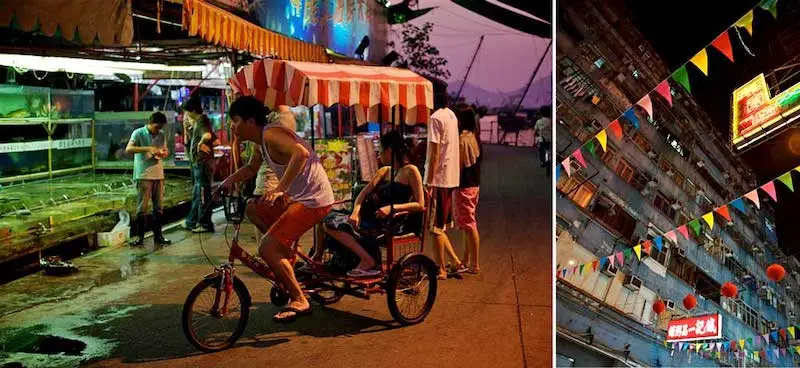
Quels seraient les plus grands conseils que vous pourriez partager à un jeune photographe qui veut collaborer avec de grands groupes industriels, des maisons d’édition ou des agences de design?
Les grands groupes, les agences de design et d’architecture, ou les maisons d’édition ont un niveau d’exigence très élevé, et nombreux sont les photographes qui collaborent déjà avec eux, mais pour autant je pense qu’il y a encore de la place pour tout le monde !
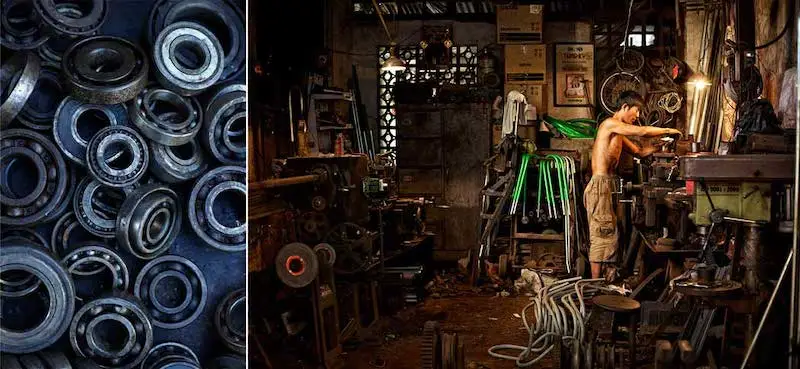
- Restez alignés: Si j’ai appris une chose, c’est qu’il faut toujours écouter son intuition et son coeur car lui, ne vous ment jamais… Suivre sa voie et ses aspirations est important surtout lorsqu’on aborde des métiers passion comme la photographie. Quels que soient les clients ou organismes avec lesquels vous voulez collaborer, il est important de connaître vos réelles motivations et pourquoi vous faites viscéralement les choses. Ceci détermine la ou le photographe que vous êtes, dans son ensemble (approche, vision, style, etc…) . Ce qui vous définit fait votre unicité et votre force, vous permettant de vous démarquer et de vous faire remarquer par des clients qui vous ressemblent.
- Restez focus sur vos priorités : Je pense que dans un monde interconnecté qui va encore plus vite, il est urgent de prendre du recul, et ne pas se laisser déborder par les modes et les tendances qui finissent par diluer les énergie et nous éloigner de nos premières intentions…
- Restez engagé dans votre travail: Ne lâchez rien. Ayez foi en vous et oeuvrez à la qualité de votre travail, votre style et vos rendus.
Soyez exigeants sans être perfectionnistes… Essayez, peaufinez, soyez curieux et ouvert d’esprit pour apprendre des autres. Si vous le pouvez, adaptez votre matériel à l’exigence de vos besoins mais ne sacrifiez pas la qualité.
- Restez connectés: Si les médias sociaux peuvent nous distraire, ils constituent également un moyen important de faire connaître votre nom et de créer un engagement autour de votre travail. Instagram semble être une évidence pour nous, photographes, mais si je devais en recommander un autre, ce serait LinkedIn ! La majorité des entreprises y sont présentes et sont très actives. De plus, l’algorithme est moins » restrictif » que celui d’Instagram, et vos posts bien ciblés peuvent être un excellent moyen de générer un engagement intéressant avec vos prospects.

Prolongez ce moment avec Masaki Okumura en le suivant sur son site, sur LinkedIn ou sur Instagram.
Crédit photo : © Masaki Okumura



